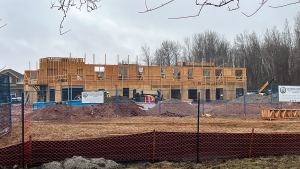OTTAWA — A new report from BuildForce Canada suggests Canada’s residential and non-residential construction labour forces will have to grow significantly over the next decade if Canada is to meet its housing supply goals.
BuildForce Canada released its Residential Scenario Outlook, 2024 to 2033 report on April 11. It finds that, for the construction industry to address the housing supply gap identified by the Canada Mortgage and Housing Corporation of 3.5 million additional housing units this decade over and above what it normally builds, the residential construction sector will need to increase its labour force by 83 per cent above 2023 levels – to just under 1.04 million workers.
Meanwhile, the non-residential construction sector, which builds and installs the essential infrastructure such as roads and sewers that support the construction of new housing, will need to expand its labour force by an additional 19 per cent above 2023 levels.
“Our report models two scenarios,” said BuildForce executive director Bill Ferreira in a statement. “Our baseline scenario tracks the impacts on the residential construction labour force under business-as-usual conditions. Our alternative scenario models the impacts on the labour force created by the drive to achieve federal housing affordability targets.
“Achieving the targets described in the alternative scenario would require a significant increase in the annual rate of housing starts over the next decade. This increase would be set to occur in an environment where the construction sector is already struggling in terms of labour to keep up with current demand levels.”
Under the alternative scenario, housing starts increase by 149 per cent above baseline levels over the next 10 years to meet affordability goals, the report said. Housing starts will rise from just over 233,000 units in 2023 to approximately 662,000 units by 2033.
BuildForce said the impacts of this increase will be felt most in Quebec, Ontario and British Columbia, where the housing affordability gaps are greatest. Each province could require a doubling or near-doubling of their respective residential construction labour forces to accommodate the projected growth.
“Meeting the workforce demands to address housing affordability over the next decade will require targeted and monumental recruitment efforts from industry, trades schools and government,” said Kevin Lee, CEO of the Canadian Home Builders’ Association. “We need to continue to actively recruit Canadians into the skilled trades and residential construction sector, reform the immigration system to allow in new Canadians who have the skills and aptitude to build homes, and bolster innovation and support productivity through de-risking investment in factory-built systems.”
The Daily Commercial News will have more on this story.











Recent Comments
comments for this post are closed